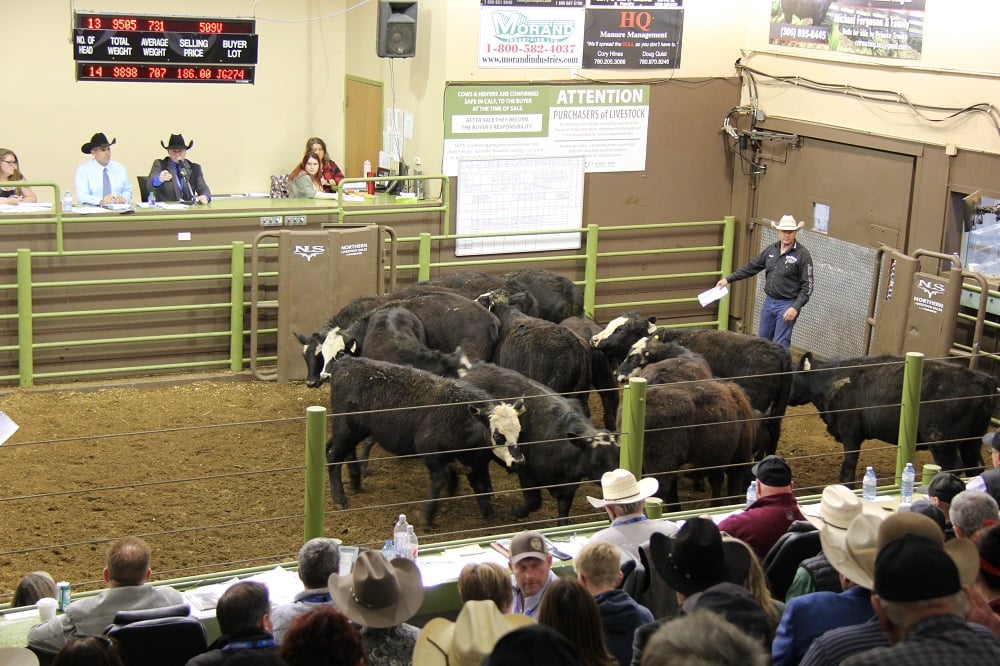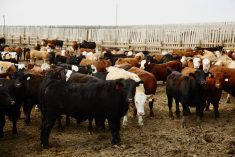Cash barley values in the Lethbridge area reached $195 in early July due to lower seeded acreage and adverse growing conditions in western Saskatchewan and Alberta.
At the same time, U.S. corn prices have been trending lower as the Midwest experiences optimal weather for crop development. Earlier in spring, I mentioned the function of the barley market was to ration demand. Prices are now high enough to attract alternative feed sources from south of the border. Given the size of the barley crop, imports of corn and dry distillers’ grains (DDG) into Western Canada have potential to reach 1.5 million mt in the upcoming crop year.
Read Also

Cattle Market Summary
Break-evens, cow and calf prices, plus market summaries courtesy of Canfax and Beef Farmers of Ontario. Cost of Production May…
Statistics Canada estimated barley acres at 8.8 million, down from 9.4 million in 2008. Using an average yield of 50.5 bushels per acre, the barley crop has potential to finish at 8.6 million mt. Barley exports for the 2009/10 crop year will likely be of malt quality only to premium markets such as the U.S. and Japan. I’m not expecting any feed barley exports as Black Sea barley is trading at a US$80 per mt discount in comparison to Canadian on a fob basis. The Canadian barley carryout does not usually drop below 1.5 million mt so the 2009/10 crop year will be historically tight. Cash barley values have potential to trade at a $10 to $15 premium to U.S. corn delivered southern Alberta next winter.
Earlier in spring, U.S. corn acres were expected to drop below 85 million but the USDA recently estimated acres at 87 million. Using an average yield of 153.4 bushels per acre, the corn crop has potential to be 12.3 billion bushels, up nearly 400 million bushels from last year. Some analysts feel the corn yield could be in the range of 157 to 160 bushels per acre if weather remains favourable during pollination season. At this time, the 2009/10 carryout is projected to be 1.6 billion bushels but if yields are better than expected, ending stocks could reach over two billion bushels. This would be historically large and could cause U.S. corn futures to drop under $3 per bushel, something we haven’t seen for a long time.
Given the feed grain price structure between barley, corn and DDGS, it will be more economically feasible to finish cattle in the U.S. instead of Western Canada.
Western Canada produced a smaller calf crop over the past two years but exports of feeder cattle to the U.S. could be very similar to levels of 2007 and 2008. Notice the higher feeder cattle exports during the fall of 2007, despite the stronger Canadian dollar.
In conclusion, a large corn crop should keep feeder cattle prices well supported into the fall. There will be stronger competition from U.S. feedlot operators for feeder cattle in Manitoba and eastern Saskatchewan. There will be a tendency for these cattle to move south rather than west. Barley prices in the Lethbridge area will trade at a $10 to $15 premium to delivered U.S. corn prices. Corn fundamentals are rather burdensome and will limit the upside in the barley market.
Gerald Klassen analyzes markets in Winnipeg and also maintains an interest in the family feedlot in Southern Alberta. For further information, comments or questions, he can be reached at[email protected]or 204 287 8268
The material contained herein is for information purposes only and is not to be construed as an offer for the sale or purchase of securities, options and/or Futures or Futures Options contracts. While the information in this publication cannot be guaranteed, it was obtained from sources believed to be reliable. The risk of loss in futures trading can be substantial. The article is an opinion only and may not be accurate about market direction in the future














